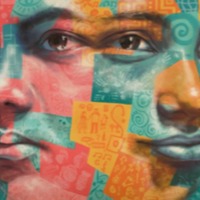
Sami
There is an estimated 48,000 people living in modern slavery in Libya (GSI 2018). Libya is a major transit destination for migrants and refugees hoping to reach Europe by sea. Human trafficking networks have prospered amid lawlessness, created by the warring militias that have been fighting for control of territories since the toppling of Muammar Gaddafi in 2011. Highly organized trafficking and migrants smuggling networks that reach into Libya from Niger, Nigeria, Chad, Eritrea, Ethiopia, Somalia, Sudan, and other sub-Saharan states subject migrants to forced labour and forced prostitution through fraudulent recruitment, confiscation of identity and travel documents, withholding or non-payment of wages, debt bondage, and verbal, physical, and sexual abuse. In some cases, migrants reportedly pay smuggling fees to reach Tripoli, but once they cross the Libyan border they are sometimes abandoned in southern cities or the desert where they are susceptible to severe forms of abuse and human trafficking. Sami left Eritrea when he was 15 years old. He travelled to Ethiopia and from there he made it to Sudan. From Sudan, he was smuggled into Libya via Chad, after paying smugglers $1,500. On the Libyan border, he was caught and told by the Libyans he had been sold by the Chadian smugglers and needed to pay more money.
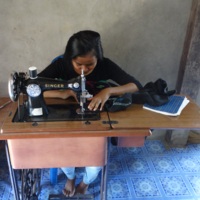
R-Sone
There are an estimated 610,000 people living in conditions of modern slavery in Thailand (GSI 2018). Women and girls, many younger than 18 years old, are exploited in Thailand’s commercial sex industry and in forced labour in domestic service, factories, or agriculture. R-Sone, the eldest of five children, lived with her parents in the southern Laos. She was only able to complete grade three before she had to drop out from school because her parents could not support her. At that time, at just 13-years-old, she decided to leave her village to look for a job in Thailand. She believed that she would earn a higher salary if she worked outside Laos. R-Sone and four friends left their village together to meet the Lao-broker in a nearby village. There he hid them in a farm hut until a tuk tuk arrived to take them to cross the border by small boat to Thailand. They did not have any documentation. After arriving in Moukdahan, Thailand, they were taken to Bangkok where they were sent to work in a plastic shop. After three days, R-stone asked for a different job because the shop was open very late. She was transferred to a pork-grinding factory but was only there for a short time before a Thai-broker took her to work as a housekeeper.
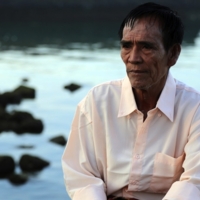
Hlaing
There is an estimated 1,220,000 people living in modern slavery in Indonesia. In Indonesia, women, men, and children are exploited in forced labour in fishing, fish processing, and construction; on plantations, including palm oil; and in mining and manufacturing. Indonesian fishermen working on foreign-flagged vessels reported pervasive abuse, forced labour, unpaid salaries, and, in some cases, allegations of murder. They worked on Taiwan, Thai, Malaysian, and Philippines-flagged fishing vessels operating in Indonesia and in the waters of Thailand, Sri Lanka, Mauritius, and India. Dozens of recruitment agencies in Burma, Indonesia, and Thailand hire fishermen, assign them fake identity and labour permit documents, and force them to fish long hours in waters for low or unpaid salaries while incurring severe physical abuse. The fishermen were prohibited from leaving their vessels and reporting these abuses by threats of exposing their fake identities to the authorities or by detaining them on land in makeshift prisons. Since 2011, about 1,500 men have been repatriated back to Myanmar. According to figures from the Bangkok-based, anti-trafficking group Project Issara, which has examined 478 of those cases, on average, the fishermen have been given only $66 in compensation for each month they were enslaved. Some 88 percent of the migrant workers received less than half of the salary they were promised - or even worse, no pay at all. Originally from Myanmar, Hlaing* now lives in a camp set up for trafficked fishermen in Ambon, Indonesia. At that time, about 81 men at the camp were still waiting to collect their wages and return to their homeland.

Dacha
There are an estimated 403,000 people living in conditions of modern slavery in the United States (GSI 2018). The US attracts migrants and refugees who are particularly at risk of vulnerability to human trafficking. Trafficking victims often responding to fraudulent offers of employment in the US migrate willingly and are subsequently subjected to conditions of involuntary servitude in industries such as forced labour and commercial sexual exploitation. Dacha loaned 22,000 dollars to pay for his transport to the United States from Thailand. He was then forced to work as a labourer on a farm with his wages withheld.

Archun
There are an estimated 403,000 people living in conditions of modern slavery in the United States (GSI 2018). The US attracts migrants and refugees who are particularly at risk of vulnerability to human trafficking. Trafficking victims often responding to fraudulent offers of employment in the US migrate willingly and are subsequently subjected to conditions of involuntary servitude in industries such as forced labour and commercial sexual exploitation. Archun was trafficked from Thailand to the US and forced to work in the farming industry to pay of his debts.

Manon
Mica is a mineral that provides the sparkling effect in cosmetics and car bodypaint. The mica mining area of Jharkhand/Bihar in India comprises an estimated 300 rural villages, and child labour occurs in these remote villages, including collecting/mining mica and cobbing (hammering minerals other than mica from the mined rocks. It is estimated that approximately 20,000 children are currently working in the mica mines in India, with 90% of these working under illegal conditions of modern slavery. Manon was trafficked from Nepal to India at the age of 6 years old to work in the Mica mine. Forced to work in dangerous conditions, and to watch his best friend die, Manon was finally rescued two and a half years later.
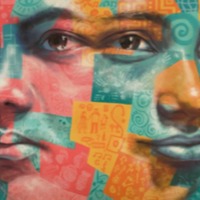
Shandra (Narrative 3)
There are an estimated 57,700 people in modern slavery in the US according to GSI estimates. The US attracts migrants and refugees who are particularly at risk of vulnerability to human trafficking. Trafficking victims often responding to fraudulent offers of employment in the US migrate willingly and are subsequently subjected to conditions of involuntary servitude in industries such as forced labour and commercial sexual exploitation. In 2015, the most reported venues/industries for sex trafficking included commercial-front brothels, hotel/motel-based trafficking, online advertisements with unknown locations, residential brothels, and street-based sex trafficking. Shandra Woworuntu arrived in the US hoping to start a new career in the hotel industry. Instead, she found she had been trafficked into a world of prostitution and sexual slavery, forced drug-taking and violence. It was months before she was able to turn the tables on her persecutors.
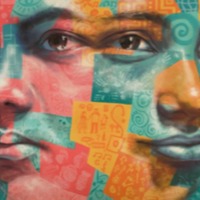
Aye
Aye grew up in rural Thailand but was trafficked to Japan to work in a Tokyo bar with other Thai women who were forced to entertain and have sex with customers. She was told she owed a large debt to the traffickers and the women were not free to leave. Aye managed to escape only after being arrested by police for violating visa restrictions and deported home to Thailand, where she returned to rural life. Thailand is not only a source of men, women and children who are taken into slavery in other countries, but also functions as a transit and destination for the purposes of commercial sexual exploitation and forced labor. Four key sectors of the Thai economy (fishing, construction, commercial agriculture, and domestic work) rely heavily on undocumented Burmese migrants, including children, as cheap and exploitable laborers.
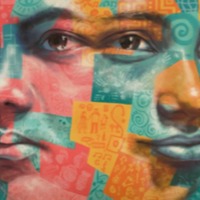
Alina
Born in Armenia, Alina was promised work in Greece but instead trafficked to the United Arab Emirates (UAE) where an estimated 10,000 women from sub-Saharan Africa, Eastern Europe, South and East Asia, Iraq, Iran, and Morocco are victims of sex trafficking. Women from Uzbekistan, Kyrgyzstan, Ukraine, Russia, Kazakhstan, Armenia, Azerbaijan, Ethiopia, Eritrea, Somalia, Uganda, India, Pakistan, Afghanistan, China, the Philippines, Iraq, Iran, and Morocco are reportedly trafficked to the UAE. for commercial sexual exploitation. Some foreign women were reportedly recruited to work as secretaries or hotel workers by third country recruiters, but were coerced into prostitution or domestic servitude.
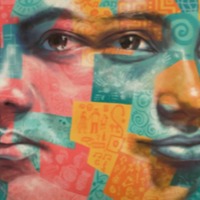
Alexia
Born in Venezula, Alexia was trafficked through Venezuela, the Dominican Republic, Trinidad and Tobago. She went on to work in Venezuela with an organization that helps women to escape from sex slavery. Venezuela is a source, transit, and destination country for men, women, and children trafficked for the purposes of commercial sexual exploitation and forced labor. Venezuelan women and girls are trafficked for commercial sexual exploitation to Western Europe and Mexico, in addition to Caribbean destinations such as Trinidad and Tobago, Aruba, and the Dominican Republic. Men, women, and children from Colombia, Peru, Ecuador, Brazil, the Dominican Republic, and the People’s Republic of China (P.R.C.) are trafficked to and through Venezuela and may be subjected to commercial sexual exploitation and forced labor. In addition, Venezuelan women and girls are trafficked within the country for sexual exploitation, recruited from poor regions in the nation’s interior to urban and tourist areas through false job offers.
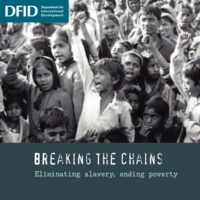
Breaking the Chains: Eliminating slavery, ending poverty
The official publication to mark the bicentenary from the Department for International Development, with a particular focus on the links between poverty and forms of modern slavery around the world.
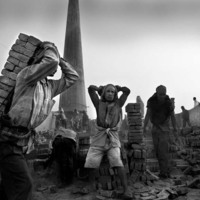
Carriers, Nepal
Entire families are in bonded labor slavery. Often, families get a loan for an emergency or to pay a broker a fee for getting hired on a new job. Slaveholders, the only people near with any money to lend, trick the borrowers into slavery through illegal, exorbitant interest rates that are impossible to repay. Children inherit the bogus debt from their parents. Generations of families have been enslaved for a loan of just $18.
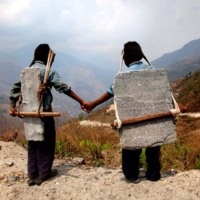
Brothers Carrying Stone, Nepal
Each day, children make several trips down the mountain, delivering stones from higher up in the Himalayas. They use makeshift harnesses out of ropes and sticks, strapping the stones to their heads and backs. Many of them come from families where everyone is trapped in debt bondage slavery. One of the mothers describes what it was like to be in slavery, “Neither can we die, nor can we survive.”